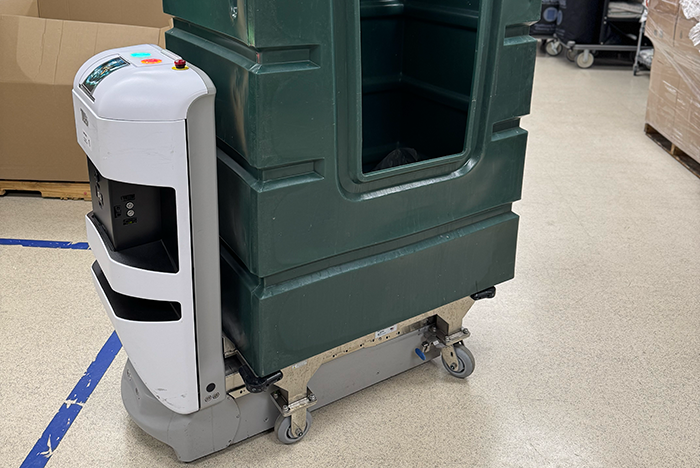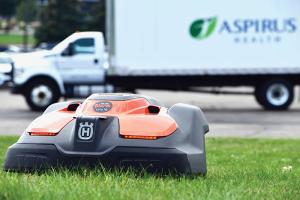Robots aid Froedtert Hospital’s EVS team

Autonomous robots have taken over the time-consuming and labor-intensive task of transporting soiled linens and waste at Froedtert Hospital.
Image courtesy of Froedtert Hospital
The environmental services (EVS) team at Froedtert Hospital in Milwaukee has some added support: a fleet of five autonomous robots. Nicknamed “TUGs,” the T3 mobile robots developed by Pittsburgh-based manufacturer Aethon are used to tow heavy carts filled with soiled linens and waste. The robots automatically locate, lift and attach to a laundry cart, reducing the muscle strain associated with heavy lifting for the hospital’s 22 EVS employees.
EVS supervisors manage the robots by assigning transport jobs to a queue. The robots use forward-facing radar to “see” obstacles and can maneuver slowly around objects in their path. However, an EVS team member monitors the robots for issues via a computer workstation or tablet. The robots operate on a 12-hour runtime and automatically dock to charge. EVS staff also have taken a lead in educating other hospital staff members on how to interact with the TUGs to minimize disruption.
The TUGs have operated at maximum capacity since arriving on the hospital’s campus in 2023. In 2024, the TUGs traveled more than 9,700 miles and completed more than 78,000 deliveries. By transporting more than 6 million pounds of trash, 740,000 pounds of recycling and 370,000 pounds of regulated medical waste in that year, the TUGs freed EVS staff to take on other activities.
“If you assume an average walking speed of 3 mph, the travel time equates to 3,233-plus hours that the sanitation team can use to support patient care operations instead of transporting trash, linen or biohazards to the sanitation dock,” explains Mathew Gnirk, CMIP, director of environmental and linen services at Froedtert Hospital and Froedtert Bluemound Rehabilitation Hospital.
Gnirk adds that the TUGs also have been a morale booster for EVS. The robots’ routes were programmed by Aethon, in partnership with directors of EVS and facilities services. The only time the TUGs would need to be reprogrammed, Gnirk explains, is in the event of a physical construction change to the route.




